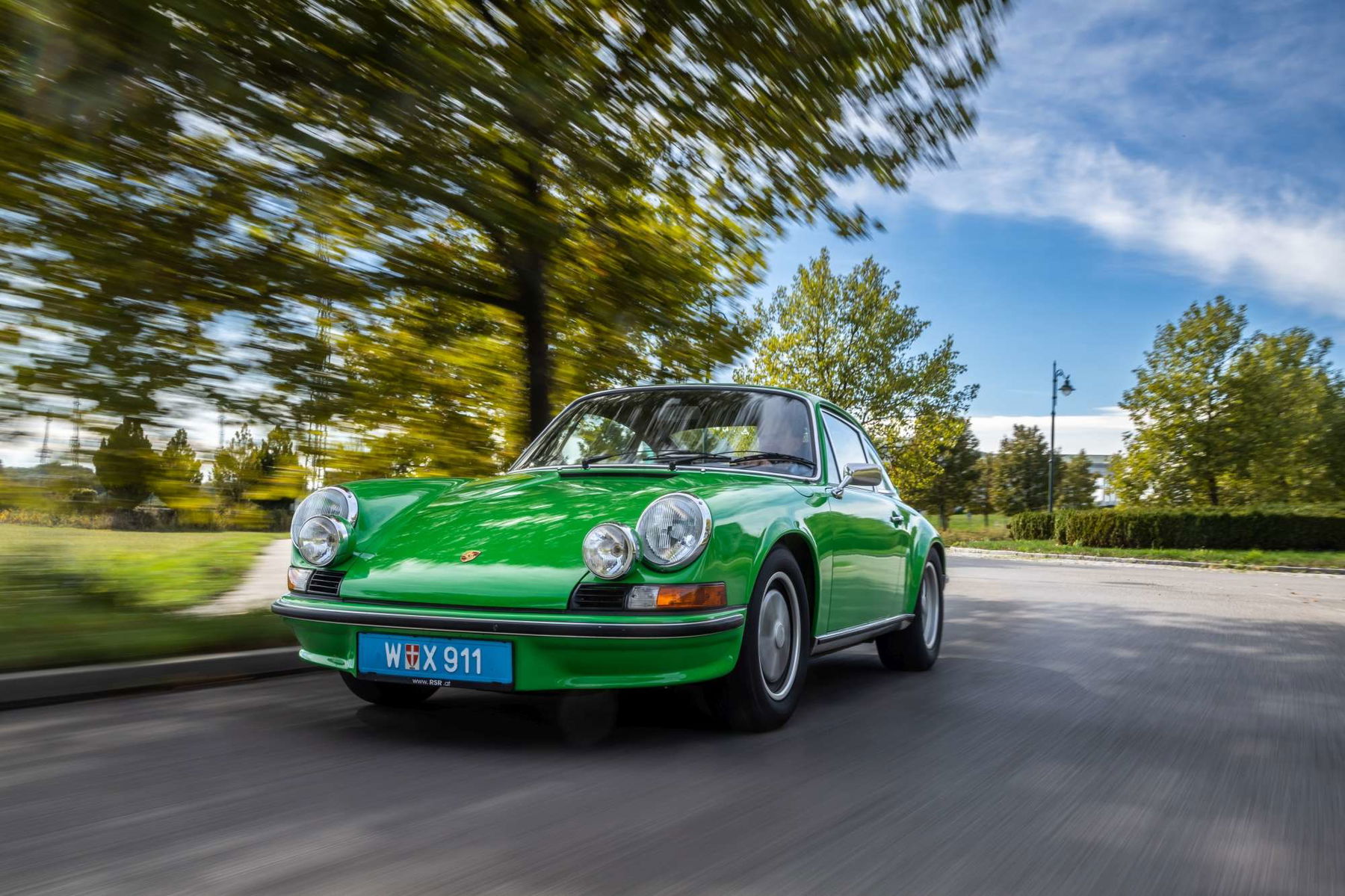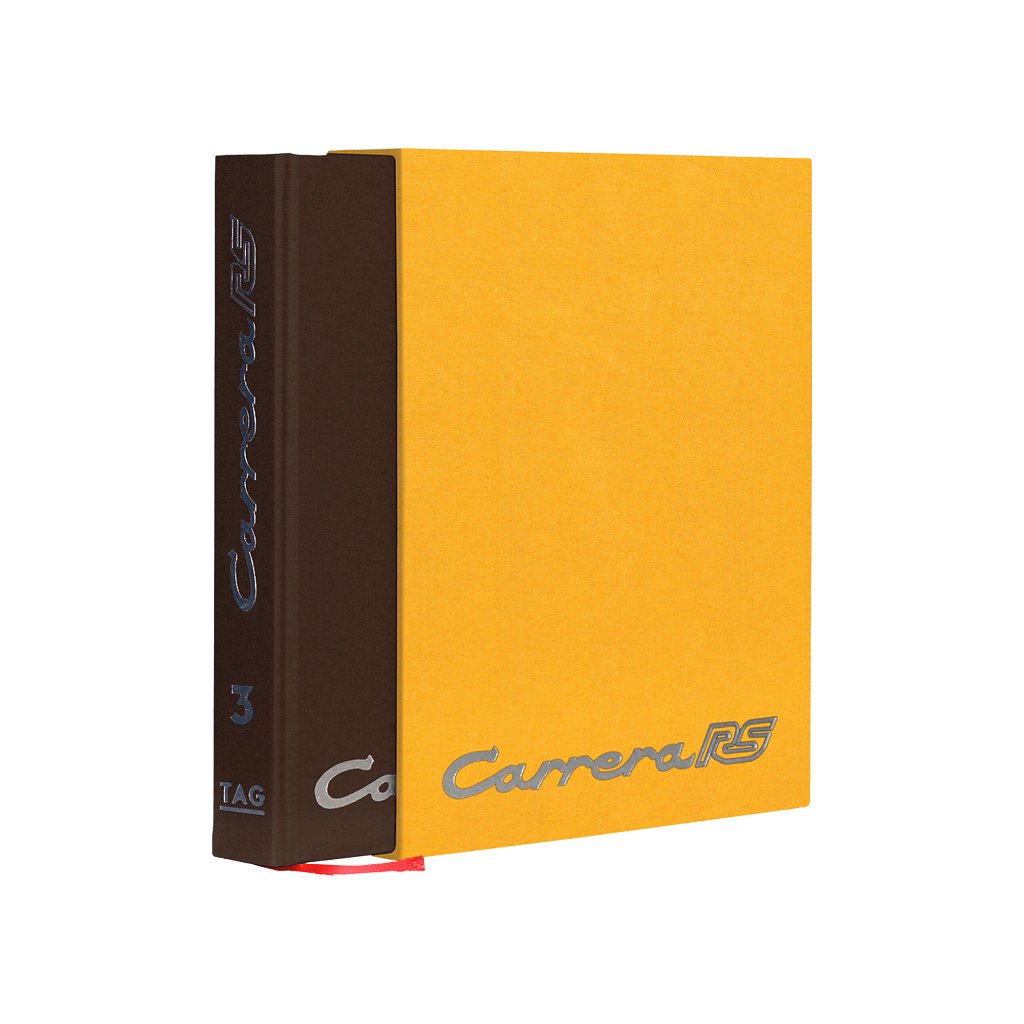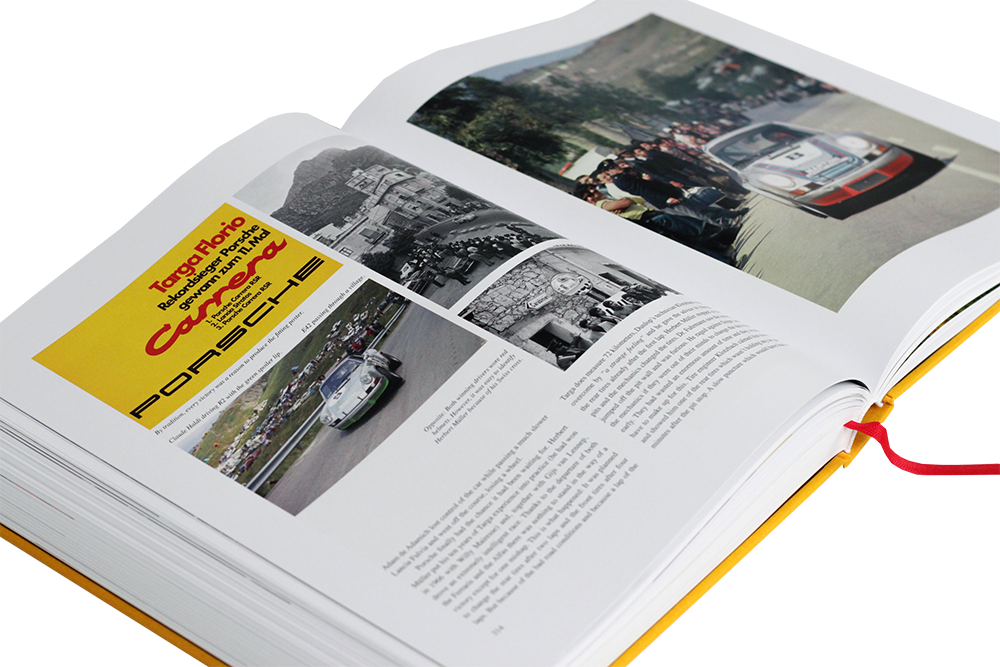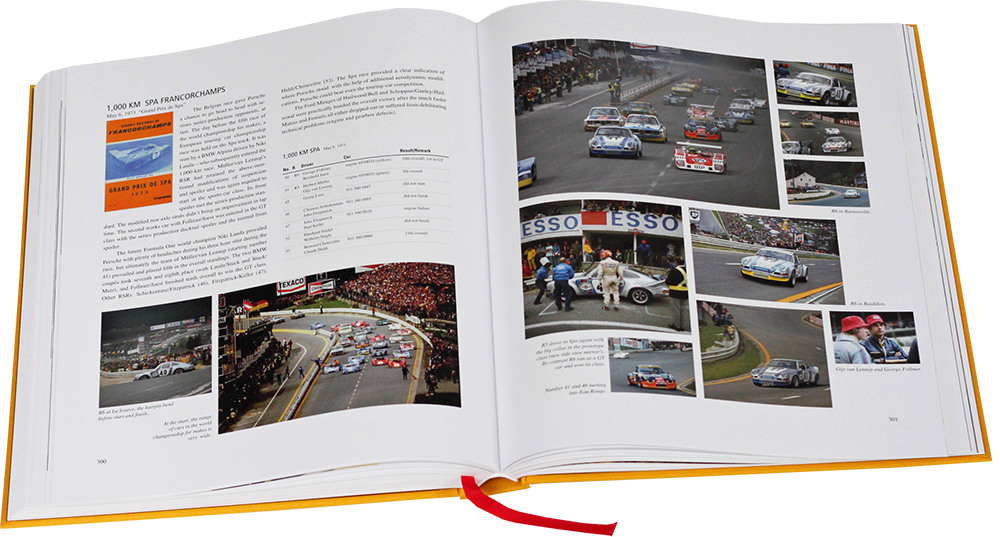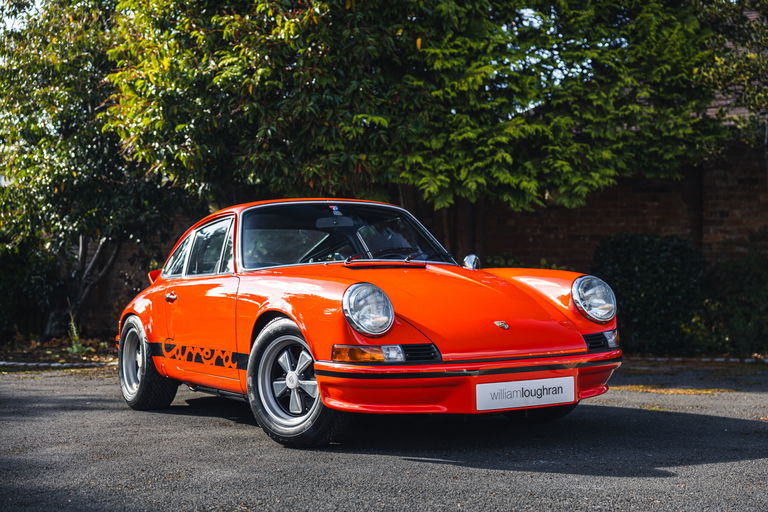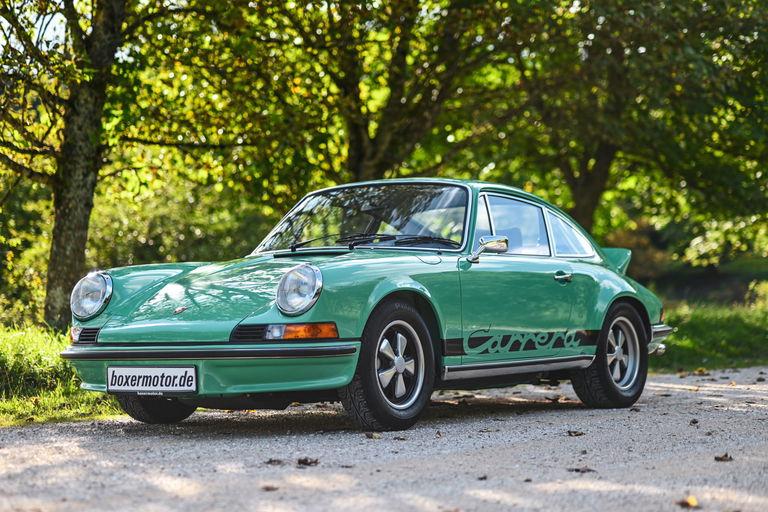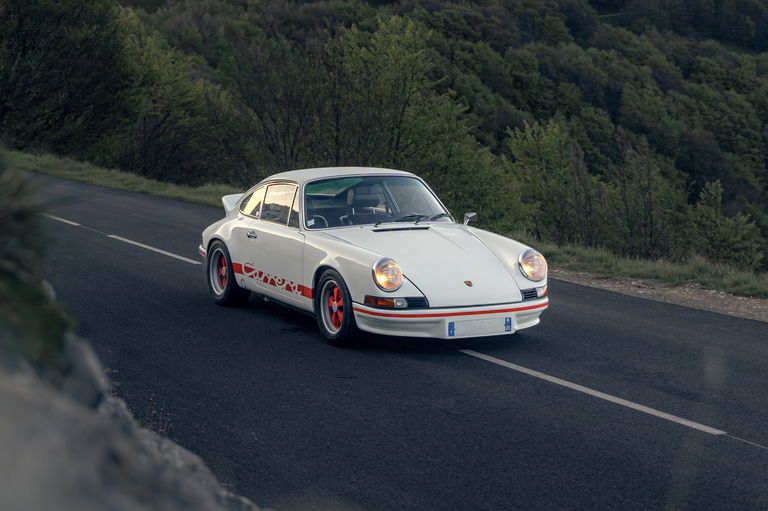Richard Lindhorst is the editor-in-chief of Elferspot.com and has been writing about the world of the Porsche 911, its derivatives, and all other sports cars from Zuffenhausen for years. He has been driving Porsches since 2011 and works on them himself.
Do you have a tip for a story or just want to get in touch with him? You can find him on Instagram at @rchrdlndhrst.
2,520 deutschmarks – that was the premium, Porsche customers had to pay for a Carrera RS 2.7 in 1972/73 compared to the Porsche 911 S 2.4. From today’s perspective, this was money well spent, since really good Carrera RS lightweight models can cost seven figures. The 911 S 2.4, on the other hand, costs many hundreds of thousands of euros less. But why is that? Where exactly are the differences?
The motivation came from racing – due to regulations, the Porsche 911 S 2.4 was not eligible as a homologation model
Porsche crowned itself overall winner of the 24 Hours of Le Mans for the first time in 1970, the second time the 917 was used. The experience gained in developing the 917 – the cost of which brought Porsche close to financial ruin – was to be used to reorganize the brand’s motorsport program. From now on, motorsport based on production vehicles was to become the brand’s core competence. A homologation model for use in Group 4 was therfore needed.
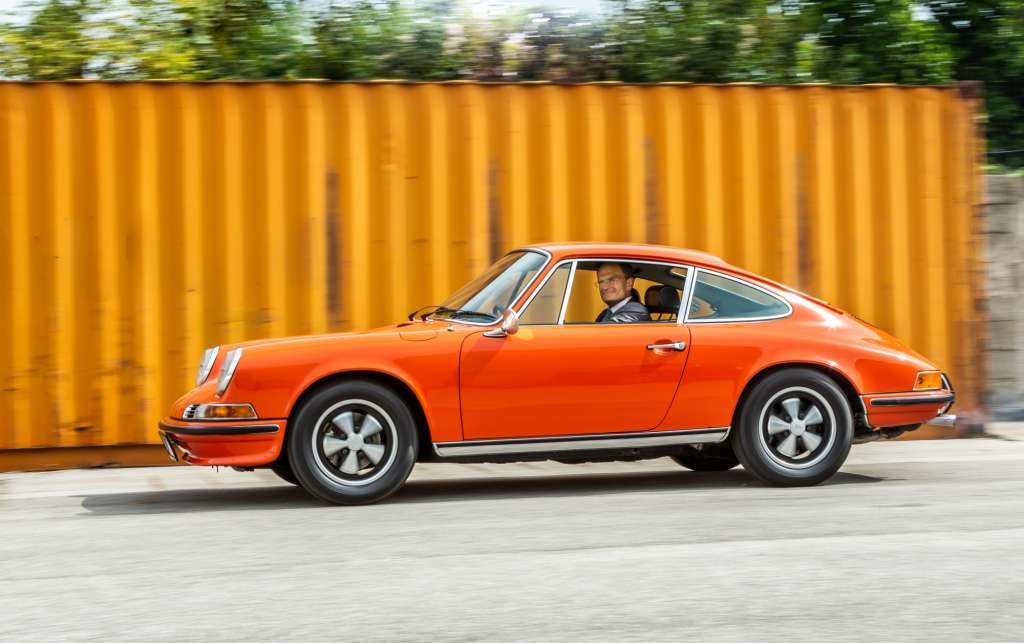
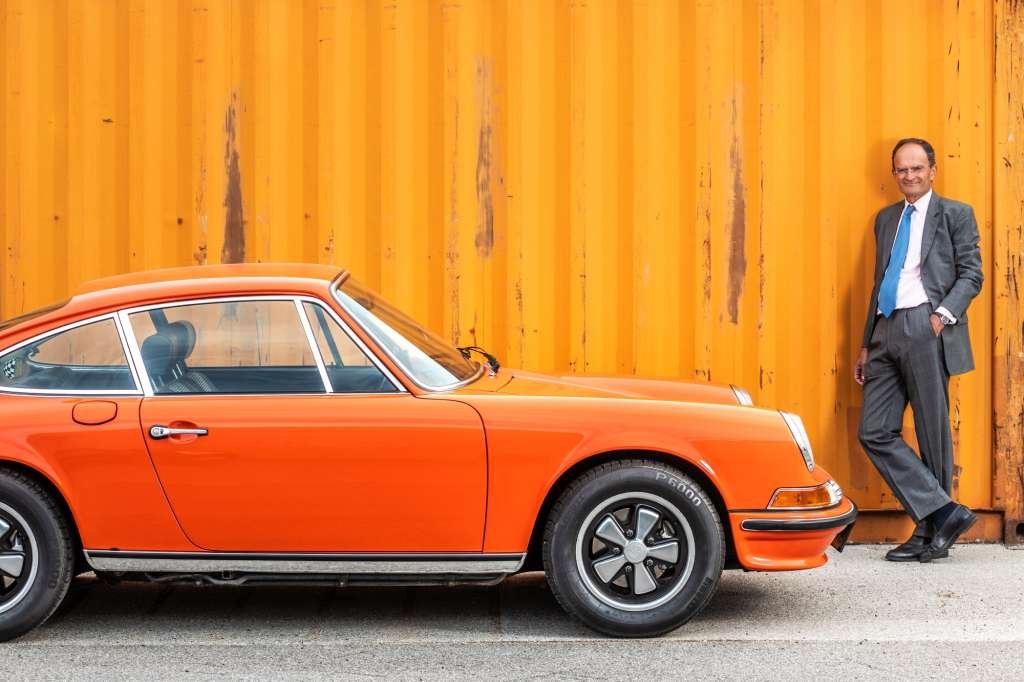
But the 911 S 2.4, Porsche’s top model at the time, would simply not have been suitable as such. The relatively narrow body of the 911 would only have allowed tires with a relatively narrow width. This was because widening racing cars was limited to 100 millimeters starting from their production counterparts. The homologation regulations also denied excessive and costly lightweight construction. At that time, racing cars were not allowed to weigh less than the production models. Thus it was written in Appendix J, art. 252 n) of the FIA’s sporting code.
There was also the matter of displacement. The 911 S would not have been allowed to exceed 2.5 liters of displacement in racing. Expansion was only ever possible up to the next full 0.5 liters. A production engine with a displacement of over 2.5 liters would consequently have allowed a racing unit with up to 3.0 liters.
The development goals of the Porsche 911 Carrera RS 2.7 were clear
Porsche took the 911 S 2.4 as the starting point for developing their Group 4 homologation model. To save weight, plenty of insulation and carpets were omitted from the interior. Instead, there were felt linings, rubber mats and thin glass windows from Belgian manufacturer Glaverbel. Where it was justifiable, thin sheet metal was used. Even the traditional Porsche crest on the trunk lid gave way to a glued-on emblem.
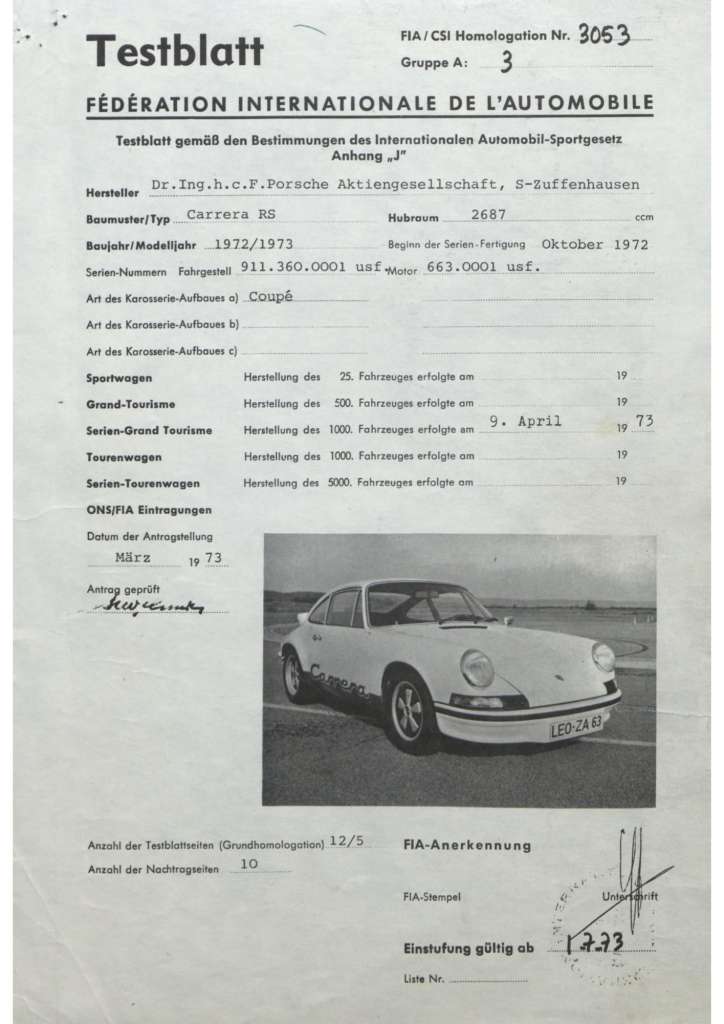
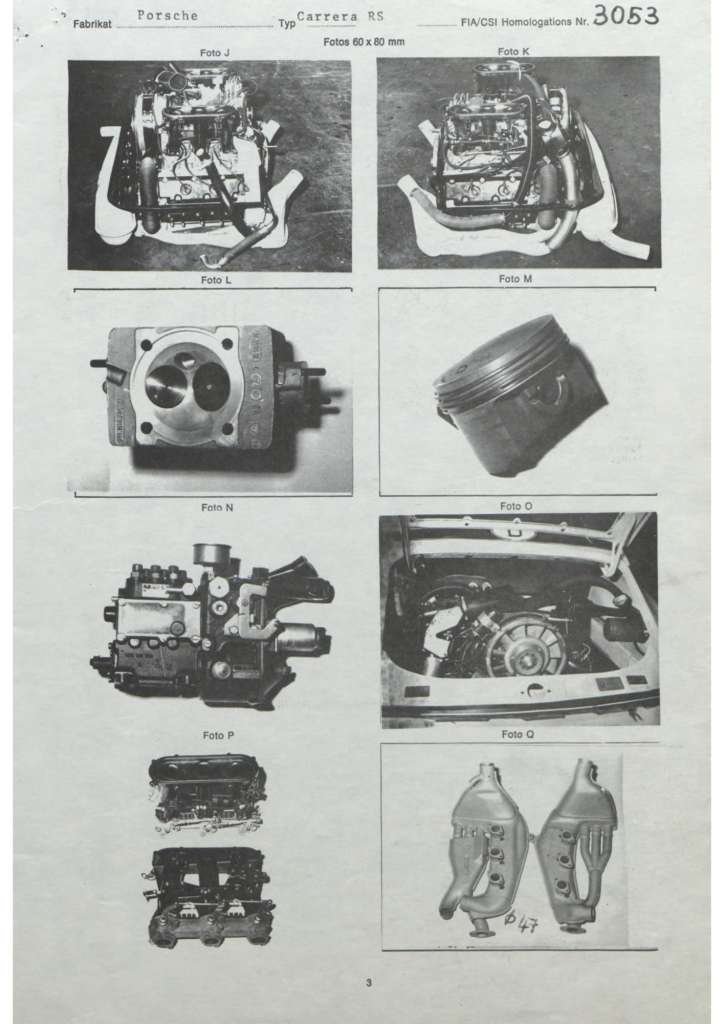
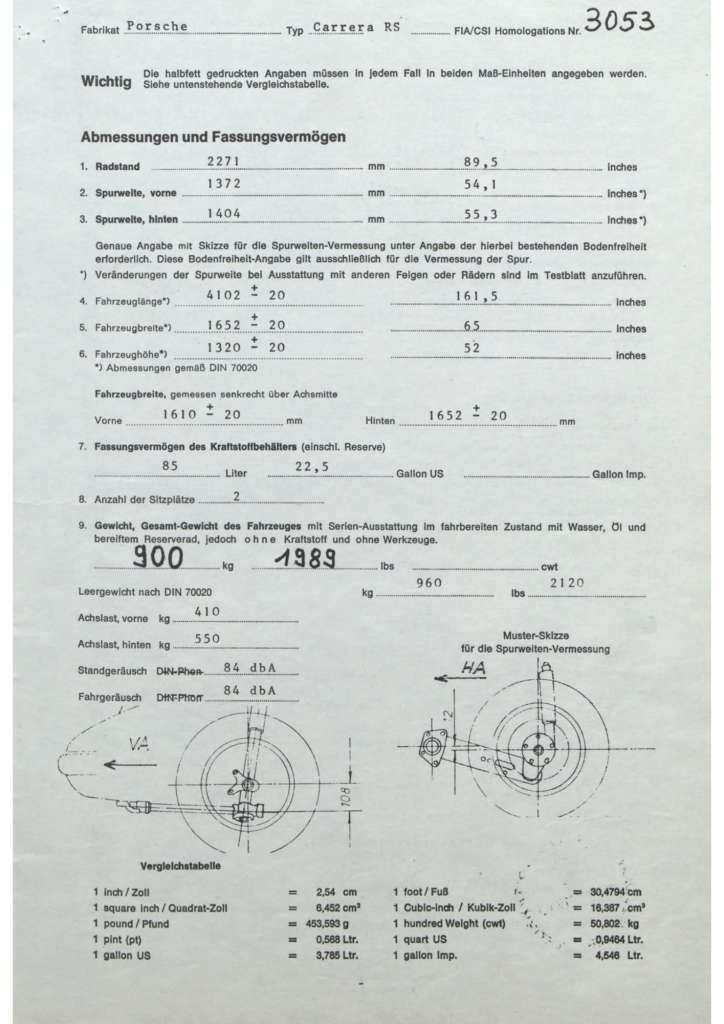
Luckily, the engine block of the Porsche 911 S 2.4 was equipped with enough reserves. This made it possible for Porsche to coax more power out of the six-cylinder engine at a reasonable cost. The RS received new light-alloy cylinders with 90 instead of 84 millimeters of bore and state-of-the-art Nikasil coating. Displacement increased to 2,687 cc. With the same crankshaft, connecting rods, compression ratio and timing as the 2.4-liter engine in the 911 S, the engineers achieved 20 more horspower and increased the torque by 39 Newtonmeters for the Carrera RS 2.7. That may not sound like much, but it noticeably changed the engine’s characteristics. For racing use, the engine could even be bored up to 3.0 liters.
The rest is history by now: first 911 with different tire sizes front to rear (rear 7J instead of 6J x 15), bespoke skirts, wider flared fenders and a distinctive aerodynamic aid that was quickly christened the ducktail! No other design feature has achieved comparable prominence in the car world, yet it was created solely for functional reasons. It was intended to stabilize handling and, as a by-product, added 4.5 km/h to top speed.
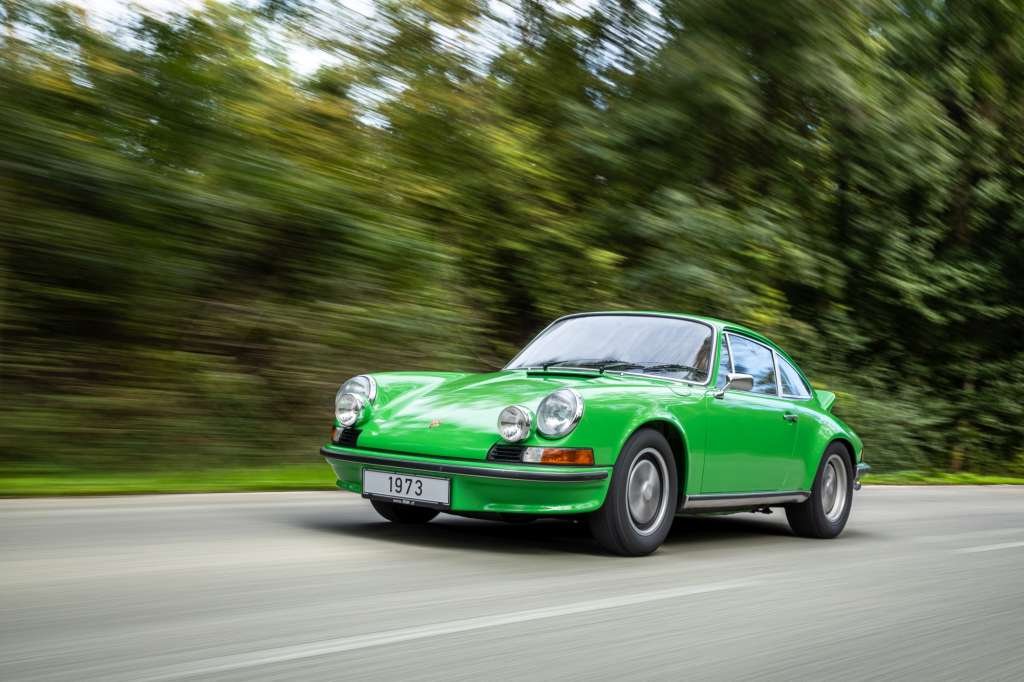
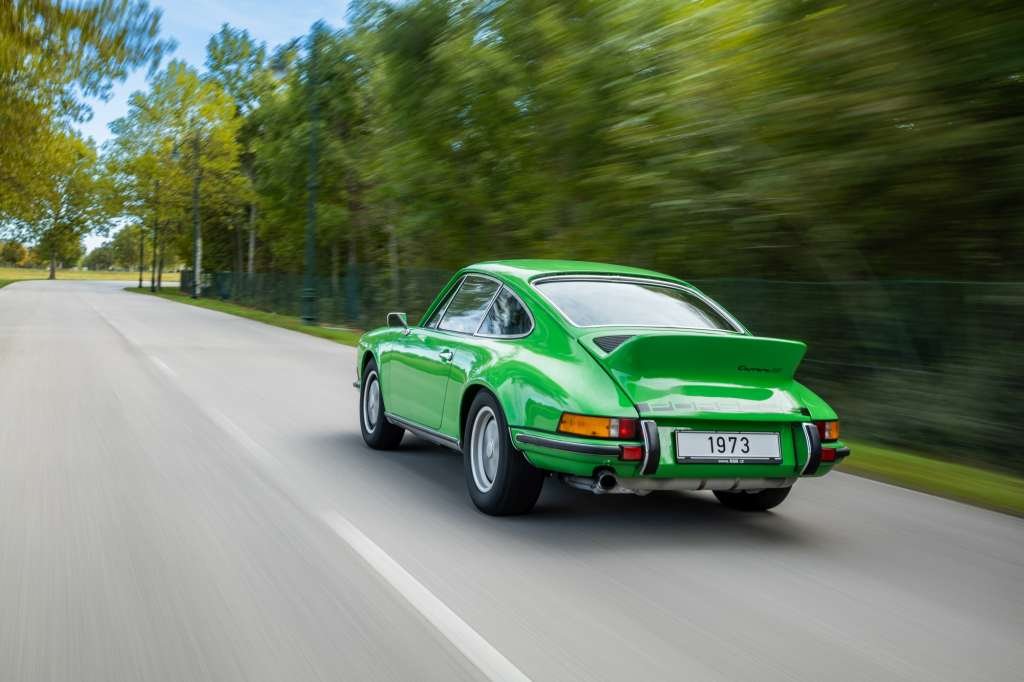
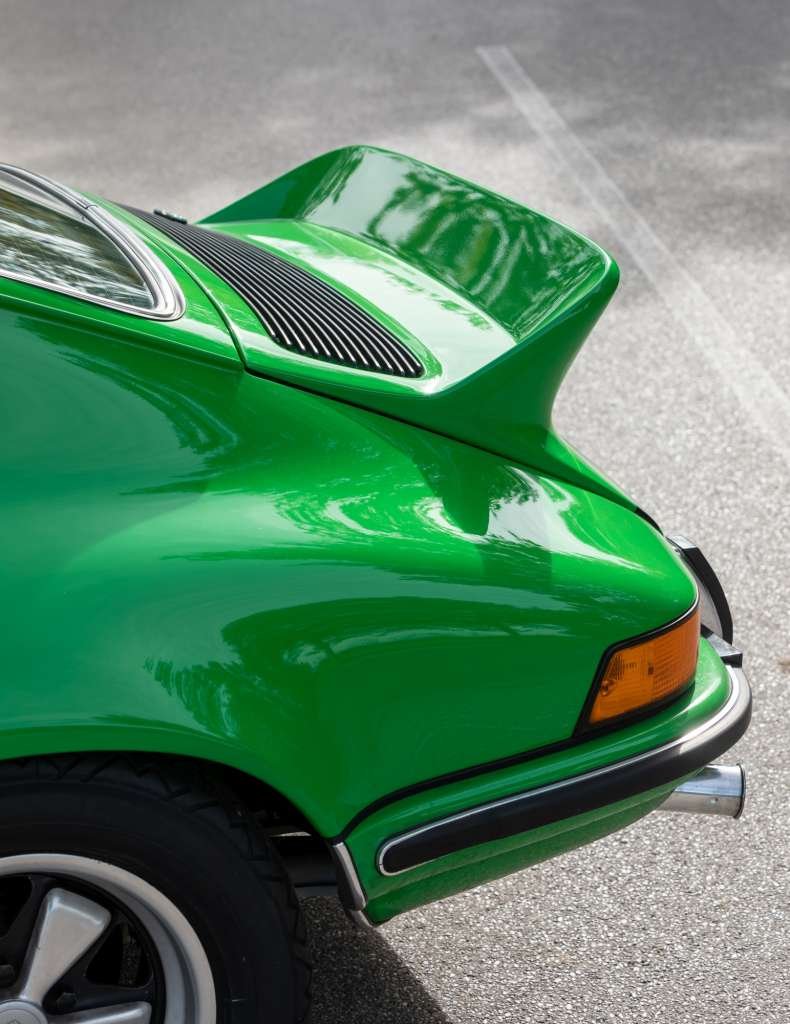
The Porsche 911 Carrera RS was closer to the 911 S in everyday life than you might think
“To compare these classic Porsche 911s, I always recommend looking at historical test reports”, says Tobias Schwarz of RSR.at, or better known under its founder’s name Dr. Georg Konradsheim. He should know, after all Konradsheim is considered a Carrera RS luminary in the industry. Together with Dr. Thomas Gruber, Konradsheim published the comprehensive Carrera RS book, also known as the “Carrera RS Bible”. This also includes an RS register listing all 1,580 RS ever built.
“Paul Frère was testing the Porsche 911 Carrera RS at the time. Since he drove the 911 S 2.4 privately, he was able to make a direct comparison and highlight the differences,” says Schwarz. The test report is also printed in the RS book. Its depth is really impressive. In it, Frère reports driving impressions from several thousand kilometers, including a visit to a racetrack. The conclusion: Porsche’s first 911 Carrera RS is nowhere near as raw and loud as feared. On the contrary, the Belgian journalist and racing driver praised the sports seats, for example, as “surprisingly comfortable, as was evident after driving around a thousand kilometers in one go.”
The chassis design and noise level also surprised positively. He did not find the tighter suspension at all uncomfortable. As for the Carrera’s higher noise level, Frère even said that he only noticed it when he switched back to his own Porsche 911 S. Porsche did not expect more from a Carrera driver than from the driver of an early 911 S of the 2-liter era. And that was despite the fact that Frère was testing the Sport (or Lightweight) and not the more comfortable Touring version of the Carrera RS.
The biggest differences between the Porsche 911 S and the Carrera RS were not in sprinting, but in pulling power
The RS was the first 911 to bring down its 0-62 mph time below 6 seconds. In the test, Frère achieved a truly fabulous time for 1973 with 5.8 seconds. However, the 911 S 2.4 was not far off with 6.6 seconds. The engine development was much more evident in the pulling power from low rev ranges. From 40 to 100 kph, the RS took a full 6.5 seconds off the S (10.6 to 17.1). At very high average speeds – the article mentions 220 kph cruising speed – the RS was also more economical. Its consumption of 17.2 liters per 100 kilometers was more than two liters below that of its more luxurious brother.
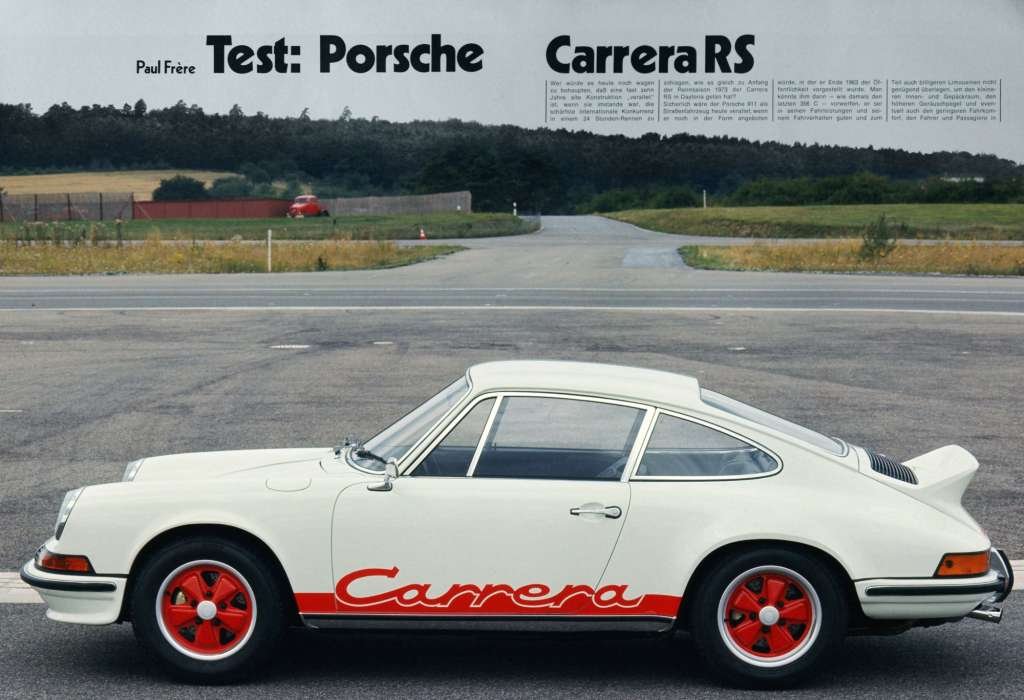
The Carrera pulls through quite powerfully even at 4000 rpm, so that you rarely need to downshift lower than 4th gear during brisk freeway journeys, whereas under the same circumstances in the 911 S 3rd gear often has to be used.
Paul Frère on the differences in engine characteristics between Porsche 911 S 2.4 and Carrera RS
In addition, the 911 Carrera RS was also modestly priced at the time. Especially in view of the international competition. After all, tin-plated sheet metal for rust prevention and high quality workmanship were anything but a matter of course in sports car construction in 1973. Although the prices for comparably powerful sports cars were usually twice as high. The fact that the Carrera RS is today many times more expensive than the 911 S 2.4 is of course due to its historical significance and the rarity of only 1,580 models built. Even if the 911 S, with 5,054 units, was by no means a mass product.
You could have ordered your 911 Carrera RS with the same equipment as the 911 S 2.4
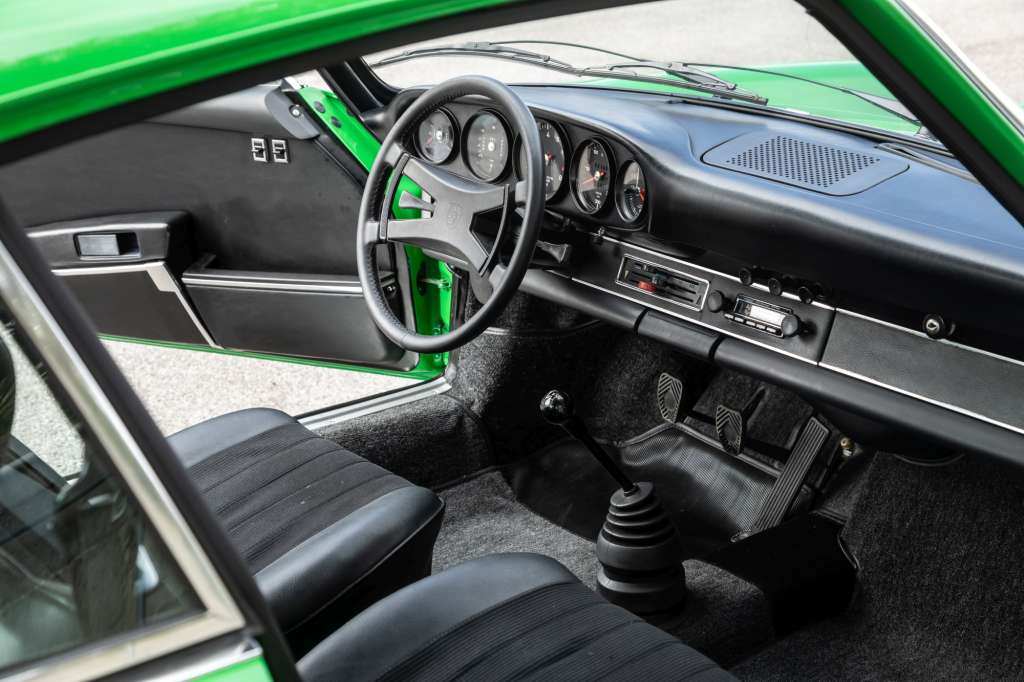

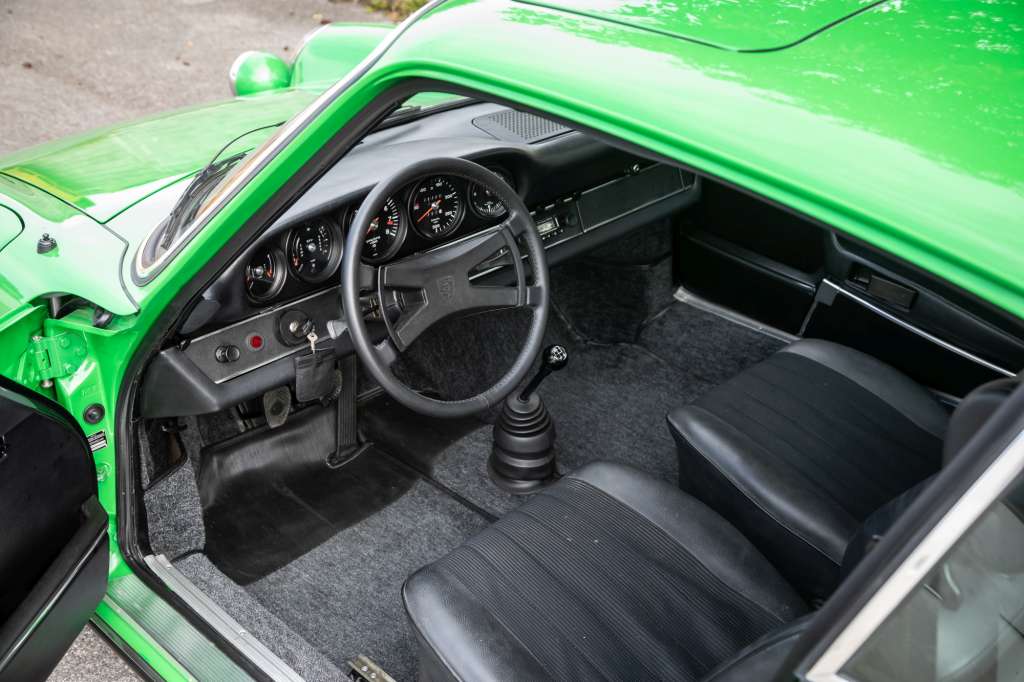
Even though the Carrera RS Sport tends to be more popular (and more expensive) among collectors, the RS with Touring package is the better choice for many drivers. “In the Touring, the RS received the same equipment as its more sedate siblings 911 S”, Schwarz knows. Then, its weight was also similar to the S 2.4. You can recognize an RS Touring by the equipment code M472, which meant an extra DM 2,500 in 1973. With 1,308 units, they make up the majority of the production. Only 200 Carrera RS Sport with the M471 package were built.
Interestingly, the 911 Carrera RS Touring in particular makes a very confident driving impression. Comfort and usability are not only in no way inferior to the 911 S, the RS surpasses the S in every area. In addition to significantly more power in the mid-range, this impression also has to do with the aerodynamics and tires. As Paul Frère noted back in 1973, the wind-tunnel-developed front apron combined with the ducktail provided greatly improved driving stability. “You notice that very quickly, especially in crosswinds,” agrees Schwarz. The RS still had a certain built-in nervousness, but it was a bit more compliant on the road than the S. The one-inch wider rear wheels with 30-millimeter wider tires did the rest.
Thanks to the close relationship, it does not always have to be the top model
For these reasons, many 911 drivers retrofitted the distinctive ducktail. While this didn’t transform these cars into an RS, the difference was noticeable. The RS is not a completely separate model, but rather a carefully re-tweaked Porsche 911 S. At the time, Porsche was concerned that they would not be able to sell the 500 units required for homologation. But immediately after its presentation, it became clear how well such a car would be received on the market. The recipe of the 911, which can serve all segments from everyday sports car to Le Mans winner, still works today.
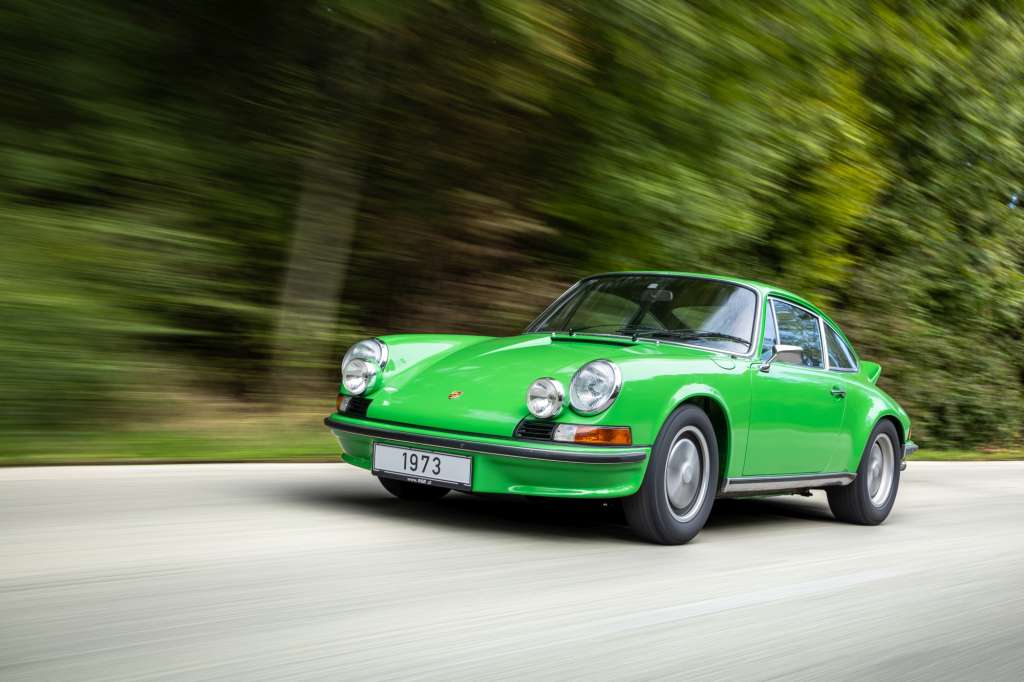
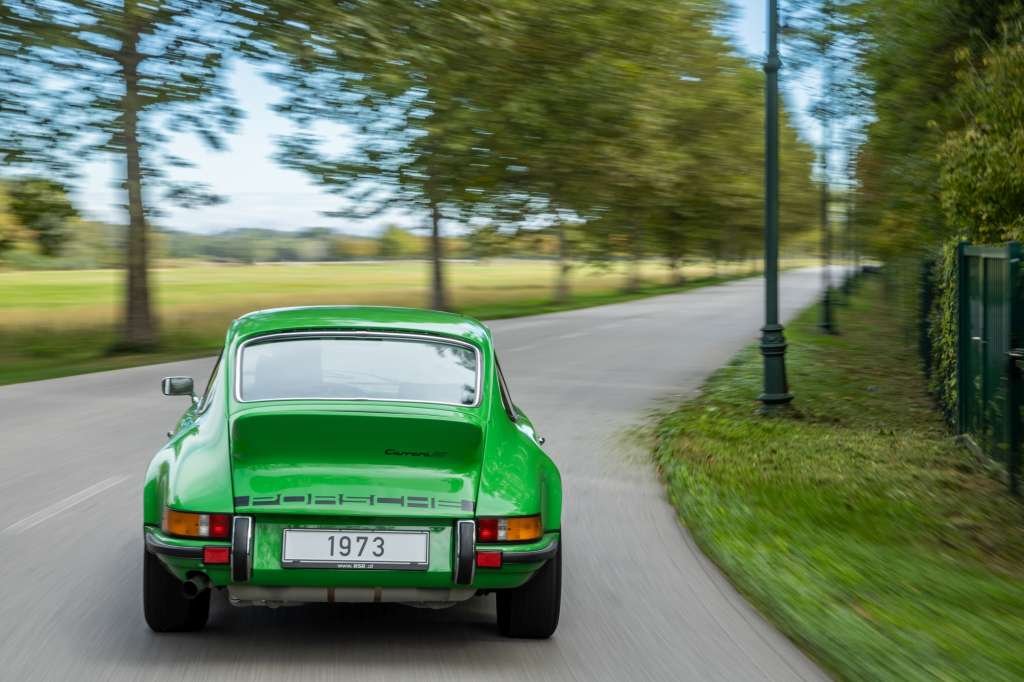
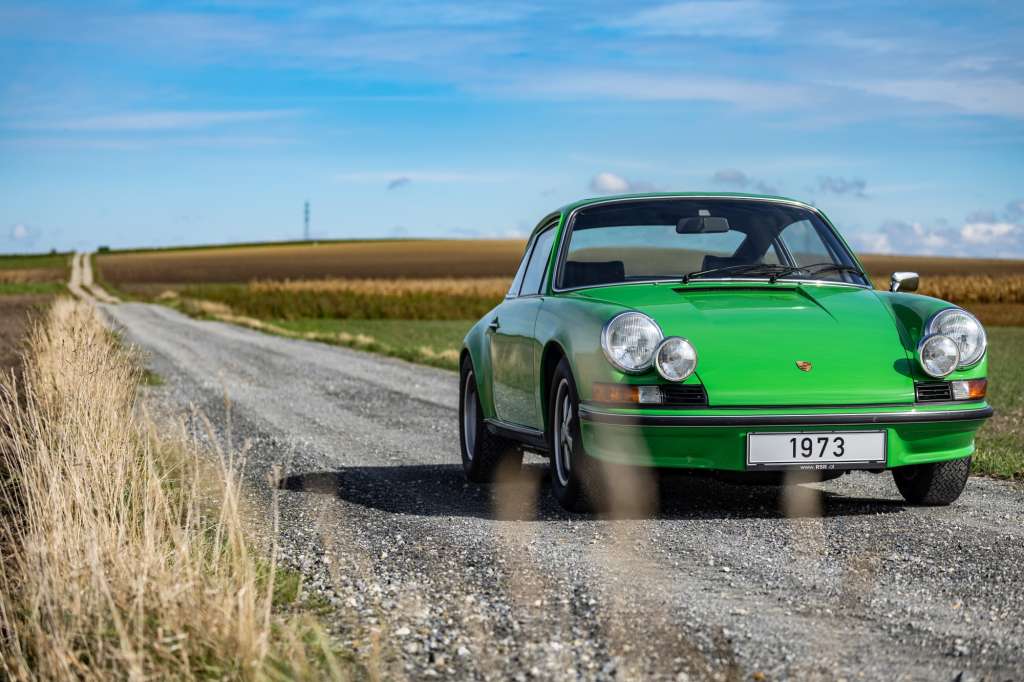
Heart and personal preferences play a bigger role than bare numbers or comparisons.
Dr. Georg Konradsheim on comparing the Porsche 911 S and 911 Carrera RS
Of course, there’s no arguing away the fact that a Porsche 911 Carrera RS triggers even more emotions than a 911 S 2.4. But the fact that both belong to the same model family, are closely related, has a very big advantage, especially today. “These automotive treasures are usually driven very little today, certainly not at the limit. The differences between the S and RS can be felt and heard at all times, but a 911 S is still a wonderful car, of course! In addition, some people prefer the narrow, rear spoiler-less body,” Tobias Schwarz sums it up. But, as dealer Konradsheim also emphasizes, “Heart and personal preferences play a bigger role than bare figures or comparisons.”
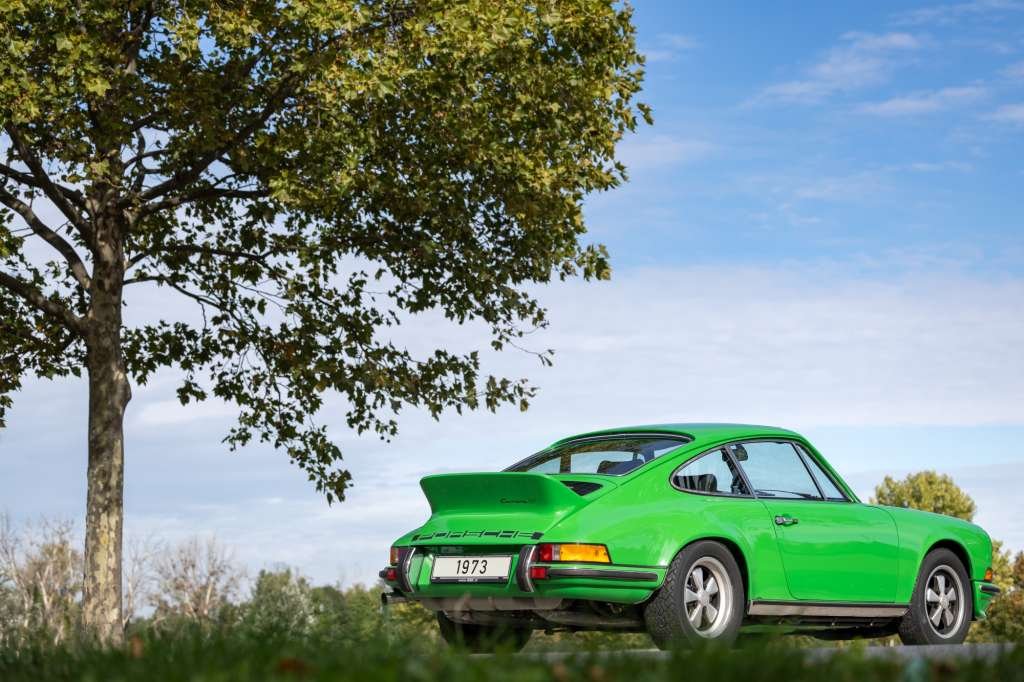

You want to win a free copy of the Carrera RS Book? Take part in our competition!
The comprehensive Porsche 911 Carrera RS book by Dr. Georg Konradsheim and Dr. Thomas Gruber has long since achieved legendary status. It is often referred to as the “Carrera RS Bible”. The authors have compiled all the special features of the Carrera RS on 434 pages. The four-kilogram book is limited to 3,000 copies per language (de/en) and numbered. In addition to numerous previously unpublished photographs from the Porsche’s archive, it contains a complete register of all 1,580 RS ever produced.
You want to win your own copy of the Carrera RS book? Then take part in the competition! Answer the question correctly, register with the registration form, sign up to our newsletter and become part of the Elferspot family. In addition to the chance to win, as a registered Elferspot user you can also enjoy many other benefits in the future. The deadline for entries is Januar 29, 2023, 6 pm CET.
We wish all participants good luck. The winner will be informed by e-mail. If you don’t want to wait for your luck to run out, you can of course also find this great book in our >>shop.
The competition has ended. Deadline was January 29, 2023, 6 pm CET.
Raffle conditions of participation
Deadline for entries is January 29, 2023, 6 pm. CET.
Among all participants we are giving away the mentioned price. Employees of Elferspot Media GmbH and their relatives are excluded from the raffle. Automated raffle services and raffle clubs are excluded from participation. Multiple participation leads to exclusion from the raffle. We are entitled to publish the names of the winners. The winners will be notified by e-mail and / or by post. If a winner does not respond to the winning notification within 21 days, the prize will be forfeited and a substitute winner will be drawn. Cash payment of the prize is not possible. The legal process is excluded.
Elferspot Media GmbH reserves the right, in the event of a change in legal position or jurisdiction or due to a judicial ban, to exchange the respective announced prize and to replace it with other equivalent prizes and prizes, to change the respective course of the game or to cancel the raffle altogether. Any winners who have already been determined are not entitled to any claims against Elferspot Media GmbH in these cases.
Any liability of Elferspot Media GmbH for the existence of the technical prerequisites for the timely participation in the raffle or the sending of the prizes (permanent access to the websites on which the participation is possible, or the sending of prices by transport companies) is excluded. Elferspot Media GmbH shall be released from all obligations with the delivery of the profit, unless an earlier date results from these regulations. Elferspot Media GmbH is not liable for material and / or legal defects in the profits donated by partners. The Elferspot Media GmbH is not liable for the insolvency of a partner and the resulting consequences for the implementation of the competition.
Privacy Policy
– Responsible body in terms of data protection law for this competition is the Elferspot Media GmbH, Peter-Behrens-Platz 9, A-4020, Linz.
– The storage of personal data complies with the current General Data Protection Regulation (Article 6 para. 1 b DSGVO).
– By participating, the winner declares his consent to the processing and use of this data by Elferspot Media GmbH for the performance of the competition and notification of a prize in accordance with the conditions of participation.
If the participant does not agree with this data usage, participation in the raffle is not possible.
– The participant may at any time request information about the data stored at Elferspot Media GmbH. This data can be blocked, corrected or deleted at any time by the participant. He / She may also revoke the granted consent to data collection and use without giving any reason.
Elferspot magazine
You have reached your article limit for this month.
Become an Elferspot Member now and get unlimited access to our Elferspot Magazine and other features!
- No obligations or charges.
- We help you find your dream car: get newly added cars straight into your mailbox.
- Your own watch list for your favorite cars.
- Unlimited access to Elferspot Magazin.
- -10% welcome discount for Elferspot textile products
- Successfully sell your Porsche via Elferspot.
